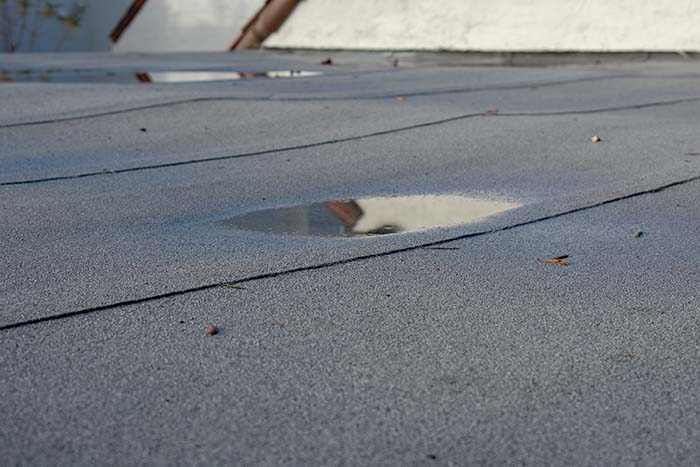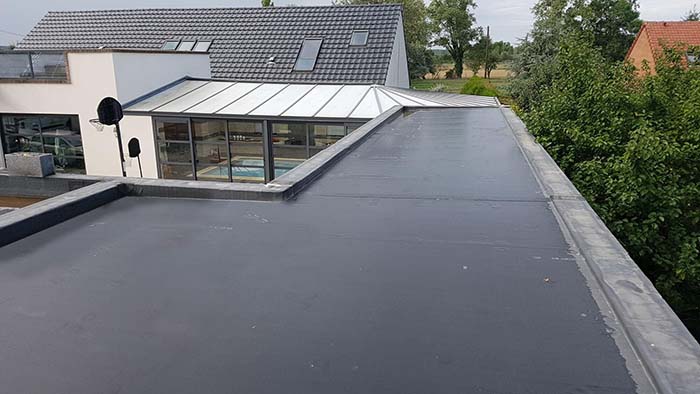If you are experiencing problems with your flat roof and are looking for ways to fix them then this handy troubleshooting guide is for you. Our guide covers a range of different flat roof complications such as water ponding, roof blistering, leaking flashing, roof alligatoring and more. We discuss how to repair these troublesome issues and fix signs of deterioration without having to replace and re-roof the entire area. In general, a roof repair is recommended only if the roof damage is situated within a small portion of the roof. The topics we cover in this repair guide are as follows:
- Cracks & Splits
- Ponding Water
- Blistering
- Roof Alligatoring
- Flashing Repair
- EPDM Patch Repair
- GRP Fibreglass Roof Repair
The most important thing to remember when repairing a roof is your own safety. Be sure to follow all local regulations and use the correct personal protective equipment to ensure you remain safe and secure when working on your roof.

